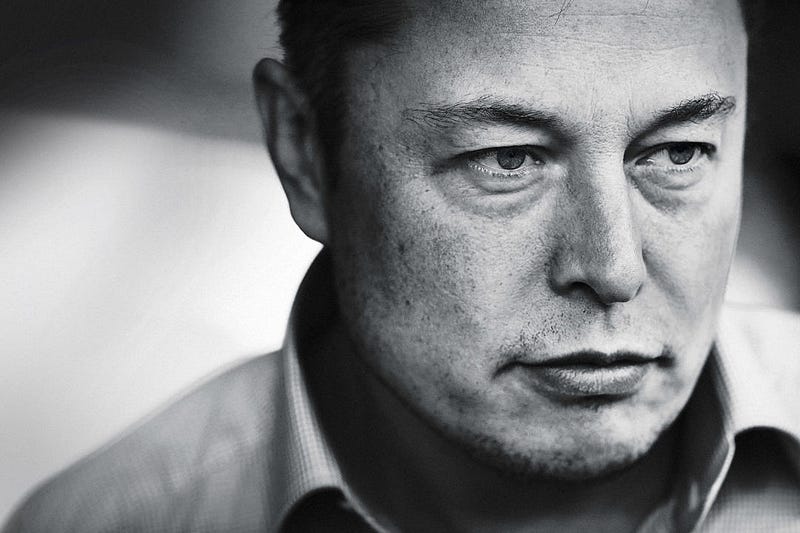How Great Founders Present Their Vision – The Startup – Medium
We expect our leaders to have a ‘vision’. If you’ve ever felt your vision was hard to capture, you’re not alone.

The term ‘vision’ was always too fluffy for my liking. It conjured up notions of countryside retreats with campfires, guitars and mild hallucinogenic drugs. To be honest, I was pretty unclear on what a great business vision was supposed to look like.
Then, I started investing in startups and found myself asking founders to tell me about their ‘big vision’. I wanted to feel as excited about their idea as they were. But I needed more than a fuzzy statement to get me excited.
What makes a vision compelling?
It’s pretty clear that a vision should describe an inspiring future product that would help a large group of people and make lots of money in the process. However, after hearing many responses to the ‘vision’ question, I noticed that great visions have something else.
Great founders make their vision seem inevitable.
So how exactly do they do this?
Trends and watershed moments
We’re sold the idea that visionaries like Steve Jobs and Elon Musk can see into the future as if by magic. However, what they are really doing is spotting trends that are already happening in the world and extrapolating them by 5 years. When you hear them describe their vision, it’s their logic that convinces you — not magic.
You don’t need to be a visionary to have a vision. You just need to connect current technology, economic, consumer trends to future customer needs.
Given that trends take place over many years and decades, the next question is: “why now?”
Sequoia Capital, investor in Google, Facebook and other successful companies, say it best on their website:
The best companies almost always have a clear why now? Nature hates a vacuum — so why hasn’t your solution been built before now?
The best answer to ‘why now’ isn’t a 10 year trend, it’s a recent watershed moment in your technology, regulatory or competitive environment that enable you to succeed where previous attempts failed. For example, Uber would have been impossible before the existence of smartphones with GPS.
Writing a compelling ‘vision verse’
The following model vision statement covers the essential parts that great visions have. It will help you convey exactly where your venture could end up in an inspiring, inevitable and investable way.
Our vision is that ____[performing a key activity] will be as easy as ____[helpful comparison].
Over the last decade, we’ve seen ____[three relevant trends]. These trends are set to accelerate now that ____[watershed technology, regulatory or competitive milestones].
Imagine if you could ____[achieve inspiring outcome(s)] with just ___[minimal user input]. We’ll actually be able to deliver this as soon as we ____[critical areas to develop in the company].
Once this is possible, our addressable market suddenly opens up from ____[current niche customer segments] to include ____[larger potential customer segments].
Eventually, we can eliminate ____[injustice of the status quo]. And that’s a vision we believe is worth fighting for.
Here are some questions to help you fill in the blanks for your company.
- Performing a key activity — what activity are your customer performing when they use your product or service?
- Helpful comparison — what’s a good metaphor or comparison to get the idea across in as few words as possible? e.g. “as easy as calling an Uber”
- Relevant trends — what ongoing macro-economic, consumer and technology trends point in the direction of your vision?
- Watershed milestones — what recently changed in your technology, regulatory or competitive environments that previously made your vision impossible?
- Inspiring outcome(s) — what will customers achieve in the future that would be almost impossible to achieve today?
- Smallest conceivable user input — what’s the minimal action that customer will take to achieve this outcome in the future? See one-sentence product descriptions.
- Critical areas to develop in the company — how can you hint at what you’ll need to achieve as a business without going into too much detail?
- Current niche customer segment — which customers do you focus on today?
- Large potential customer segments — which customers will you target in the future? Can you quantify them?
- Injustice of the status quo — How could you position your vision as correcting an injustice for your customers today?
Why visions matter
It’s thrilling to get a glimpse of the future. Trends and watershed moments give your vision a solid footing in today’s reality. Plus, researching trends is a great exercise to see the bigger picture and define the direction your company will take.
Share your vision with investors, your team, potential customers and other stakeholders to help them get as excited about the future as you are. And see if your company’s success can become as obvious to others as it is to you.
If you liked this piece, please tap the 👏 a few times so other people can see it too.
About Dave Bailey:
I coach CEOs of funded, early-stage tech companies on execution. I’m a Venture Partner at Downing Ventures in London, Mentor at Google Launchpad and a serial startup founder. Previously, I built and sold tech businesses in the UK, US and Brazil. I studied at Oxford University, Stanford Graduate School of Business and Singularity University. For more info, check out Dave-Bailey.com.
